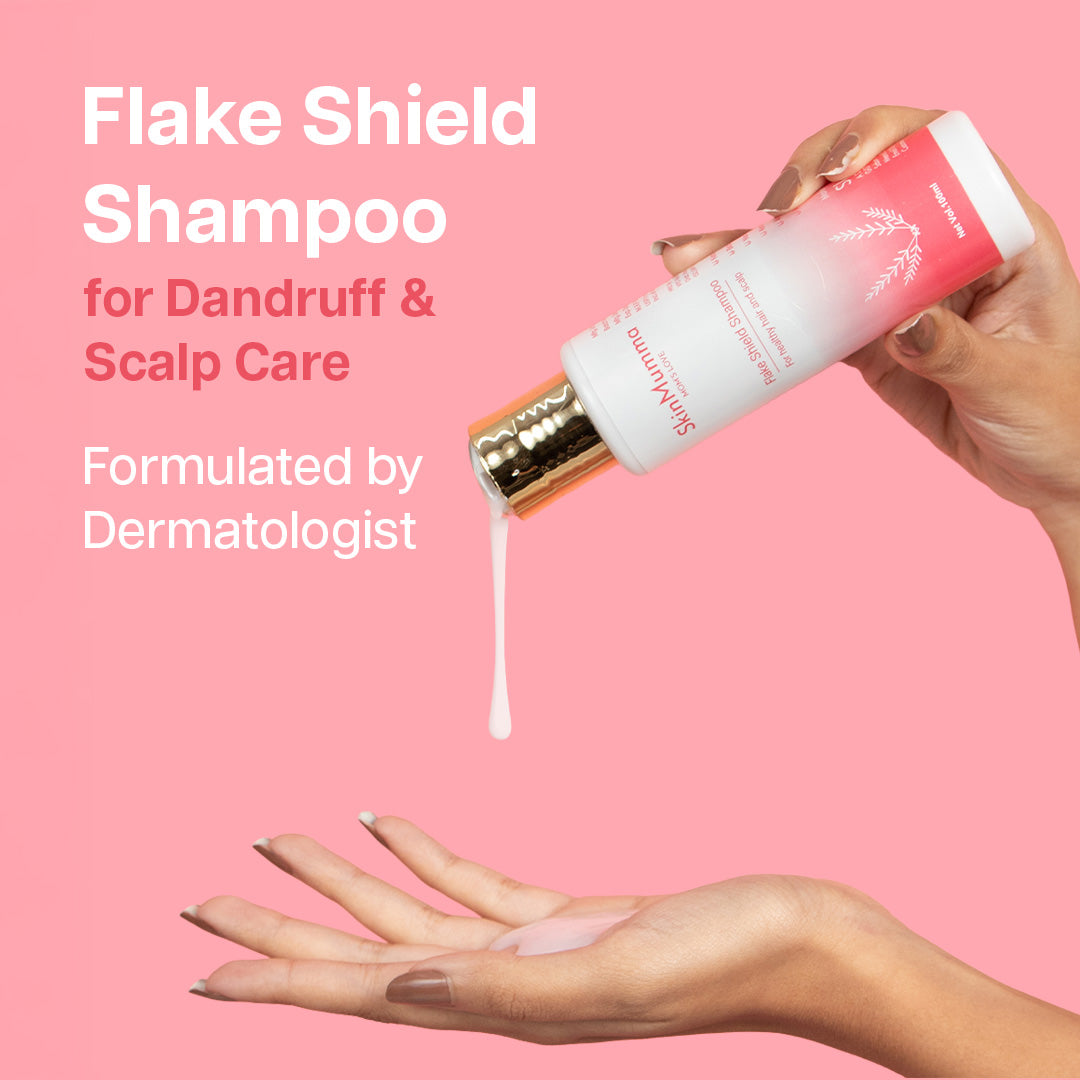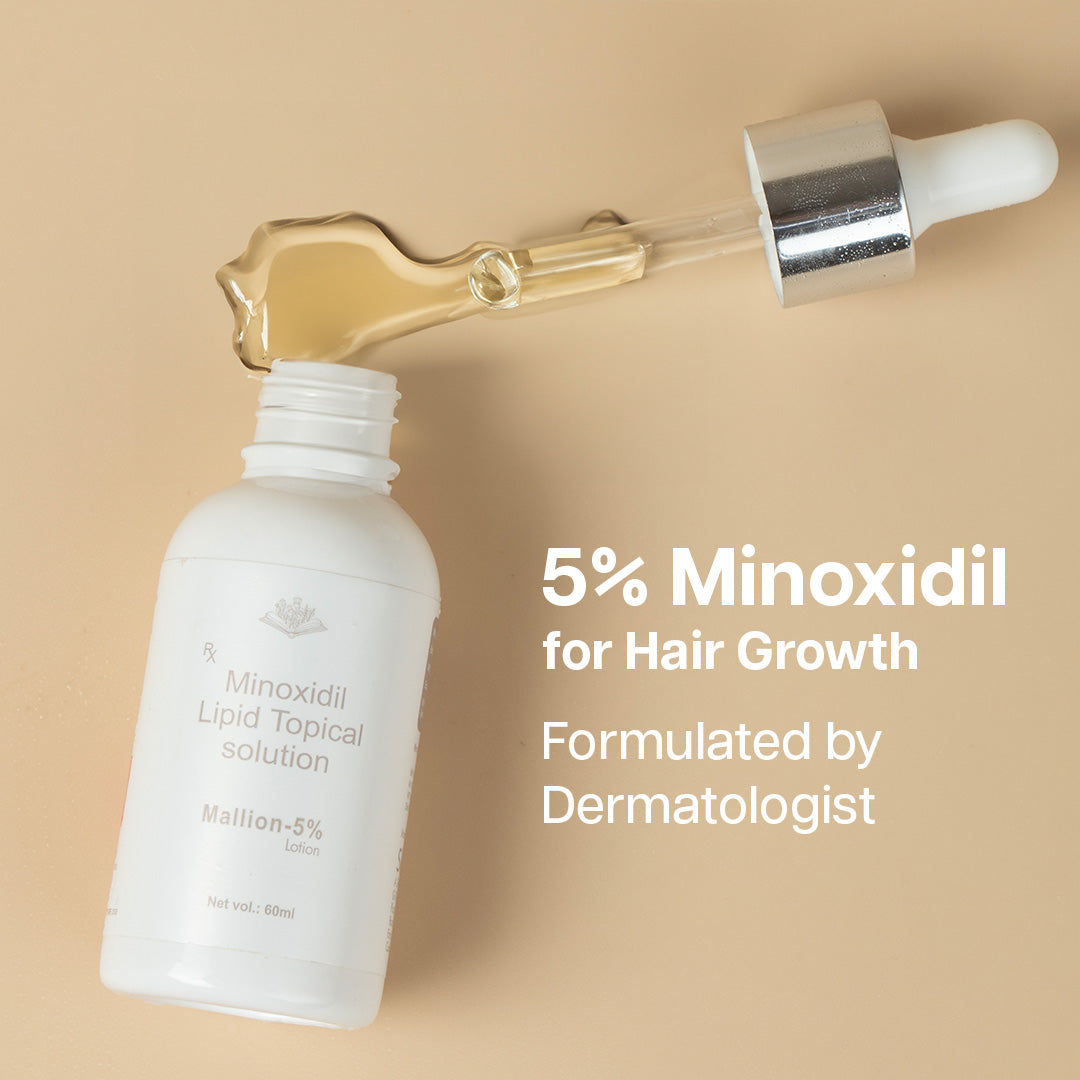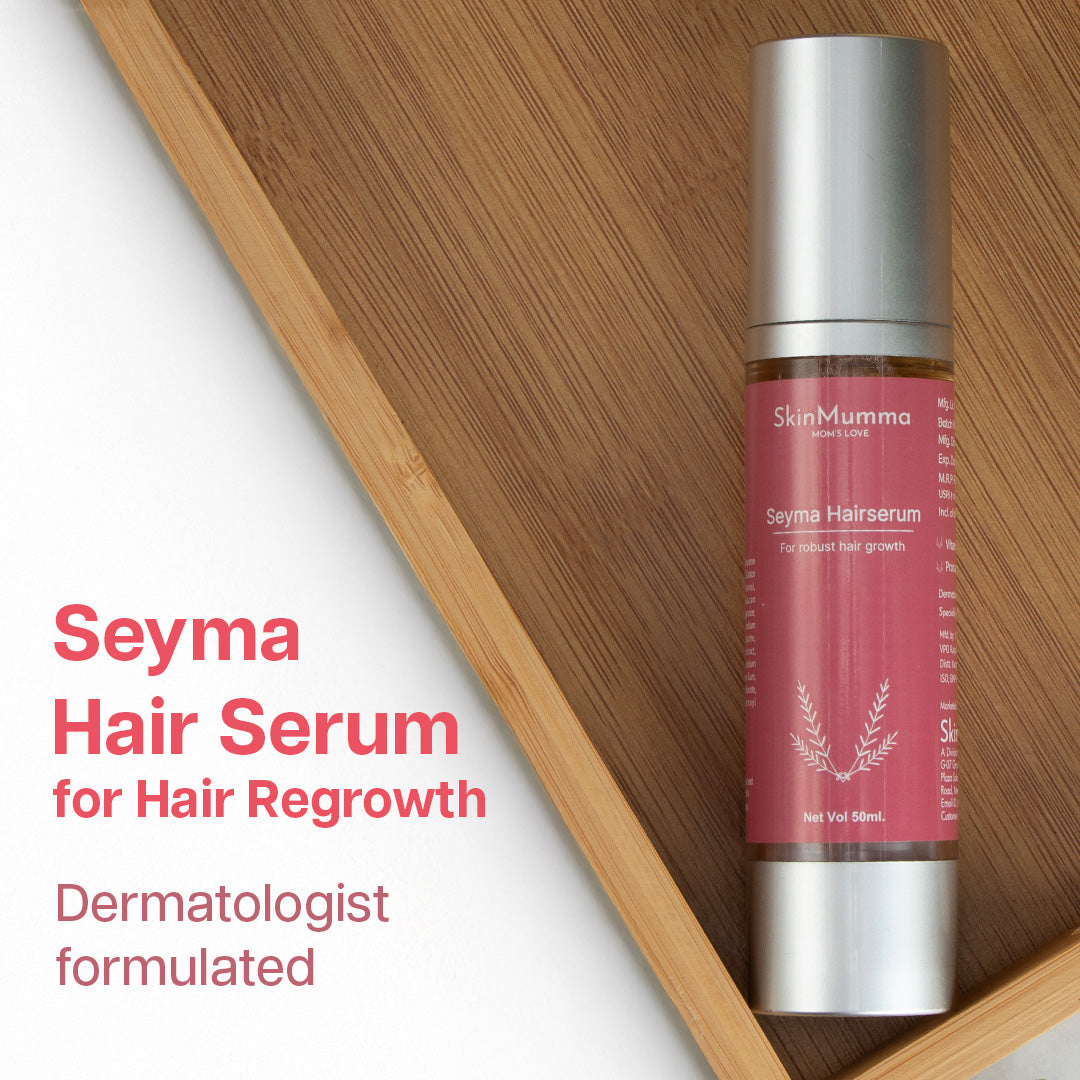You’ve faithfully committed to your hair-care routine, you see the length in the mirror, but something feels off: your hair just doesn’t look as thick, full, and voluminous as you’d hoped. You’re growing hair, but you’re not seeing that lush density. If this sounds familiar, you’re far from alone — many people struggle with the idea that their hair is “growing” yet remains thin, flat, or lacks body.
In this guide, we’ll explore what’s really going on: the root causes of thin hair, the reasons for hair thinning, how reasons for hair loss in women and men play into thickness, what you can actually do (routine, diet for thicker hair, lifestyle habits), and when you should seek professional help. As the team behind SkinMumma, we’re committed to functioning as your trusted guide to healthier, thicker-looking hair (and scalp) — because thickness isn’t just about length — it’s about vitality.
Understanding Hair Growth vs. Hair Thickness
To understand why your hair isn’t getting as thick as you’d like, it helps to revisit two related but distinct concepts: hair growth and hair thickness.
The hair-growth cycle
Each hair goes through a cycle:
- Anagen (growth phase) — the active period of hair growth.
- Catagen (transition phase) — the hair stops actively growing and the follicle begins to shrink.
-
Telogen (resting phase) — hair is at rest and eventually sheds, making way for a new growth cycle.
If the anagen phase shortens, or a high number of follicles slip into telogen, you’ll notice less fullness.
Length vs. thickness
- Growth: When your hair gets longer, you’re extending the length of existing hairs, or new hairs emerge.
- Thickness: This is about density (how many hairs per square inch), diameter (how thick each strand is), and the health of the follicle/scalp environment. So you might get longer hair, but if each strand is fine, or many follicles are inactive, it will still look thin.
In practical terms: if your hair isn’t growing thicker, one or more of the following is happening: fewer active follicles, miniaturised follicles, strand thinning, breakage outrunning growth, or an extended resting (telogen) phase. These issues are all variations on the causes of thin hair.
Top Reasons Why Your Hair Isn’t Growing Thicker
Genetic & Hormonal Factors – the Hidden Drivers
Your hair’s potential thickness is influenced a lot by inherited genetics: how many follicles you started with, how large they are, and how they respond to hormones. For example, both men and women may experience pattern hair loss driven by the hormone DHT (dihydrotestosterone), which can miniaturise follicles over time. Women may also face this in the context of androgen-related imbalances, menopause, or thyroid issues. These are major reasons for hair loss in women and are often overlooked when the focus is only on length.
Even if you’re growing hair, the follicles may become smaller (so each strand is finer), or fewer follicles may be active. The result: length without visible fullness.
Nutritional Deficiencies & Poor Diet – the Overlooked Cause
What you eat (and don’t eat) has a direct impact on hair-thickness because your follicles are among the most metabolically active cells in your body. Studies show that dietary protein, trace minerals (like iron, zinc), vitamins (D, B-complex, etc) are all instrumental in hair-shaft production and follicle health.
For example, low iron or low vitamin D can impair “normal cell growth and function” in hair follicles.
If your diet skews heavily toward processed foods, is low in protein, or you’ve been on crash diets, the diet for thicker hair must become a deliberate focus.
Lifestyle Stressors – More Than Just Lengthening the Timeline
Chronic stress, poor sleep, smoking, excessive alcohol intake, and rapid weight loss — these all have ripple effects on the hair-growth cycle. Stress can push more hair follicles into the telogen (resting) phase, so you end up with fewer growing hairs, and the ones you have may emerge thinner
These are critical hair fall loss treatment triggers: you may treat or style your hair perfectly, but if stress is driving underlying follicle dormancy, thickness suffers.
Hair Care Mistakes, Breakage & Scalp Health
Even healthy-looking hair can appear thin if it’s being broken or the scalp environment is compromised.
- Mechanical damage (over-styling, heat tools, bleaching, tight hairstyles such as tration-alopecia) can reduce visible fullness.
- If hair breaks near the root or mid-shaft, you’ll lose bulk even if growth continues.
-
Scalp health: clogged follicles, inflammation, poor circulation — these impact strand thickness more than many realise.
Ignoring these means you may grow hair, but still not keep the thickness you’re striving for.
How to Build a Routine That Supports Thicker Hair Growth
Gentle, Consistent Hair & Scalp Care
- Use a gentle, sulphate-free shampoo (preferably one supporting scalp health) rather than harsh cleansers.
- Introduce a lightweight scalp serum or tonic focused on circulation and follicle-nourishing ingredients.
- Condition the lengths (not always the roots) so you avoid weighing down your scalp or blocking follicles.
- Weekly: use a scalp-exfoliating cleanse or gentle brush to remove build-up and promote circulation.
- Minimise over-washing (which can strip natural oils), avoid excessive heat styling, and steer clear of tight ponytails/braids that cause traction.
These steps align with hair fall loss treatment by enhancing the retention of hair and supporting active growth.
Nourishing Treatments & Recommended Products
When selecting products, look for label cues: peptides (which support follicle health), keratin (for shaft strength), niacinamide (scalp circulation), botanical extracts (such as caffeine, saw palmetto), which may support hair thickness.
Check: “clinically tested”, suitable pH-range for scalp, free from heavy silicones at root, non-comedogenic for scalp.
At SkinMumm, we emphasise formulations designed for thickness-building, not just length or shine — this is what sets us apart.
You can consider adding a “best hair growth serum/products for thick hair” to your routine, but remember: product is only one pillar (diet/lifestyle/scalp care completes the picture).
Diet, Lifestyle & Habits That Boost Hair Thickness
Diet for thicker hair:
- Lean proteins: eggs, fish, poultry, legumes — your hair is made primarily of keratin, which is a protein.
- Iron-rich foods: leafy greens, lean red meat, lentils — iron deficiency is a well-known contributor to hair thinning.
- Zinc and trace minerals: shellfish, nuts, seeds — necessary for hair repair and follicle health.
- Omega-3 fats & anti-inflammatory diet: salmon, chia/flax seed, olive oil — reduce oxidative stress at the follicle level.
-
Hydration, fresh fruits/vegetables: supporting overall scalp circulation and nutrient delivery.
Lifestyle habits:
- Prioritise 7–9 hours of sleep and adopt stress-reduction methods (yoga, meditation, mindful breaks) — helping prevent follicles from slipping into inactive cycles.
- Stop smoking and reduce alcohol intake: both hamper blood flow and nutrient delivery to the scalp.
- Regular exercise improves circulation, including to the scalp, and helps deliver the nutrients your follicles need for thick-hair growth.
-
Avoid crash diets or extreme calorie deficits: these can shift hair into shedding phases, and the new growth that emerges may be finer and weaker.
Realistic Timeline: When Will You See Visible Changes?
Changing thickness isn’t instant — but it is achievable with consistency.
- Month 1: You’ll likely notice improved scalp health, less breakage, more shine, and vitality. Funds deposit stage.
- Months 2-3: New growth begins filling in; shorter hairs appear; you may see a slightly fuller posture and less visible scalp.
- Months 4-6: Noticeable visible change in volume/density, improved strand diameter, and your hair starts catching light differently.
- Beyond 6 months: Maintenance becomes key — you’ve built thicker foundations and now protect them.
Important: This timeline aligns with expectations for effective hair fall loss treatment. Be patient with yourself — managing expectations reduces frustration.
When to Seek Professional Help – Dermatologist & Trichologist Advice
Although many cases resolve with routine, diet, and lifestyle changes, there are clear signals that you should consult a specialist (dermatologist or trichologist):
- Sudden, rapid, or patchy hair loss.
- More than ~100 hairs shed per day (persistent).
- Visible scalp in areas previously full.
- Associated symptoms: itching, redness, burning, weight loss, fatigue (these may signal thyroid or autoimmune disease).
- Ineffective home routine for 6+ months with no improvement.
Professionals will evaluate via blood tests (iron, vitamin D, thyroid, hormones), scalp examinations (trichoscopy), and may suggest targeted treatments: medications (like minoxidil, finasteride in men), PRP therapy, laser therapy, or advanced nutritional/follicle treatments. Using professional help early can preserve more follicles and improve chances for thicker regrowth.
Conclusion – Your Path to Thicker, Healthier Hair
In summary, if your hair is growing but not thickening, you’re dealing with a complex interplay of causes of thin hair, from reasons for hair thinning (genetics/hormones, lifestyle, diet, scalp health) to mechanical damage and insufficient routine. The good news is you can take control of many of the factors: build a thoughtful routine, shift to a diet for thicker hair, improve lifestyle, protect your scalp and strands — and if needed, bring in professional support.
At SkinMumma, we specialise in hair-care solutions that support thickness and retention, not just length. If you commit to one change today — whether it’s adding a scalp massage into your evening routine or adjusting your dinner plate to include more iron–rich foods — you’re on the path to visible improvement within 3–4 months. Thickness does come with consistency, patience, and care. Start now. Your fuller, healthier hair is waiting.
FAQs
1. How to get thicker hair naturally
Getting thicker hair naturally takes a bit of patience and the right routine. Start by caring for your scalp — it’s where healthy hair begins. Regularly massage your scalp with oils like coconut, castor, or rosemary, which help improve blood flow and nourish hair follicles.
2. How to boost hair growth naturally
If you’re trying to boost your hair growth naturally, focus on nourishing your scalp and roots from within. Gentle oil massages two to three times a week can stimulate growth by improving circulation. Use oils like rosemary, argan, or onion seed, known for their hair-strengthening properties. Also, make sure your body has the nutrients it needs — biotin, zinc, vitamin E, and iron are especially important. Include leafy greens, seeds, and whole grains in your meals.
3. What causes excessive hair loss
Excessive hair loss can be triggered by several factors — stress, poor diet, hormonal changes, or even harsh hair products. Deficiencies in nutrients like vitamin D, iron, and biotin can weaken the hair roots, leading to increased shedding.
4. Why is my hair not growing
If your hair seems stuck at the same length, it’s often because of breakage or poor scalp health, rather than your hair not growing at all. When the ends of your hair break faster than they grow, it appears stagnant.
5. How to fix thin hair
Thin hair can be managed and improved with the right care routine. Start by using a lightweight volumizing shampoo and conditioner that adds body without flattening your strands. Apply hair masks with ingredients like keratin, argan oil, or egg protein to strengthen and thicken your hair over time.









Dr Manisha Bindal is the senior dermatologist and laser skin expert with more than 25 yrs of experience in clinical practice. She has to her credit various advanced skin care procedures and Laser skin treatment protocols including chemical peels, fillers, threads and injections. You can trust the expert hands for any skin or hair related problems or any procedure if need be.